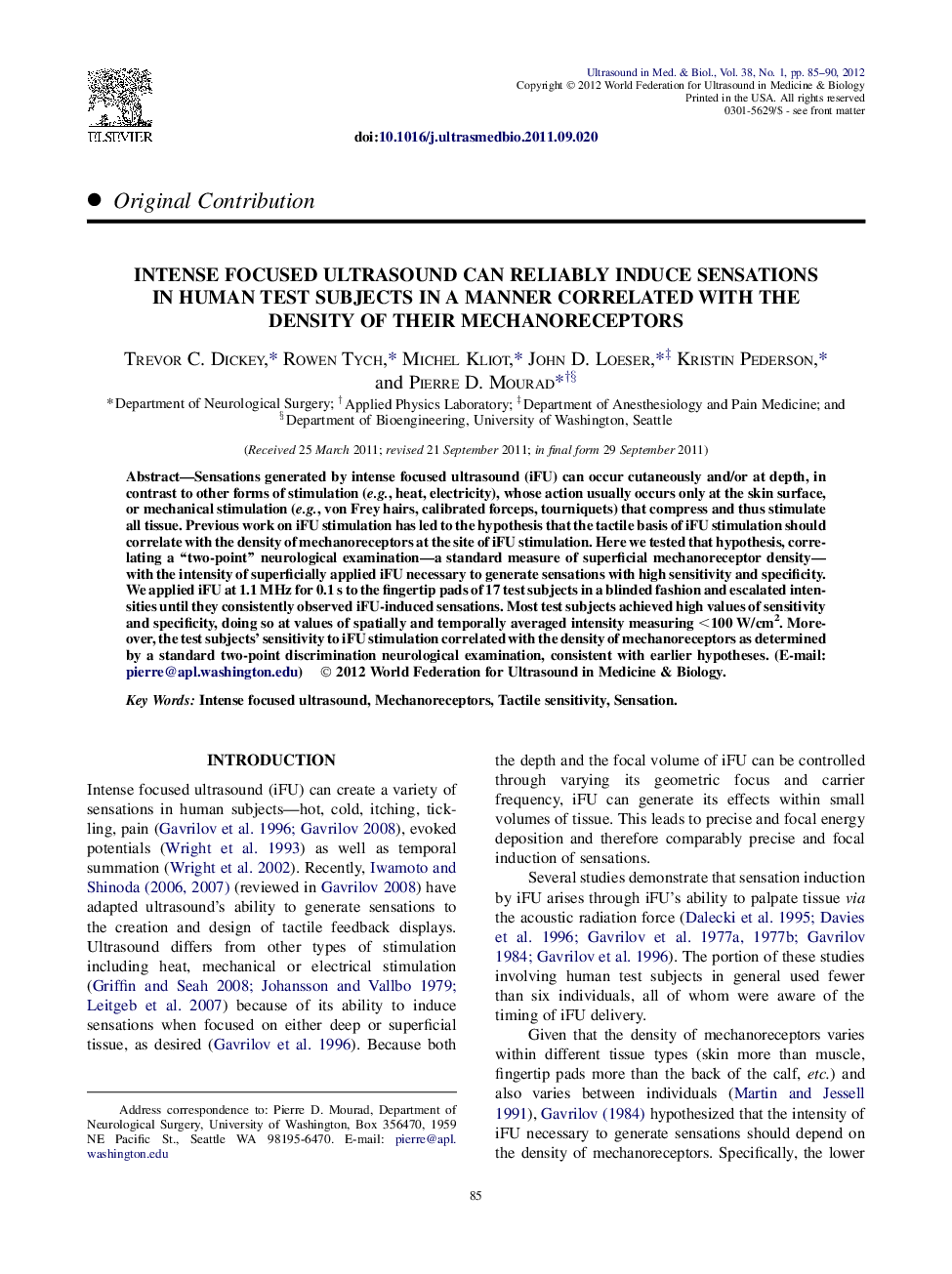| Article ID | Journal | Published Year | Pages | File Type |
|---|---|---|---|---|
| 1761568 | Ultrasound in Medicine & Biology | 2012 | 6 Pages |
Abstract
Sensations generated by intense focused ultrasound (iFU) can occur cutaneously and/or at depth, in contrast to other forms of stimulation (e.g., heat, electricity), whose action usually occurs only at the skin surface, or mechanical stimulation (e.g., von Frey hairs, calibrated forceps, tourniquets) that compress and thus stimulate all tissue. Previous work on iFU stimulation has led to the hypothesis that the tactile basis of iFU stimulation should correlate with the density of mechanoreceptors at the site of iFU stimulation. Here we tested that hypothesis, correlating a “two-point” neurological examination-a standard measure of superficial mechanoreceptor density-with the intensity of superficially applied iFU necessary to generate sensations with high sensitivity and specificity. We applied iFU at 1.1 MHz for 0.1 s to the fingertip pads of 17 test subjects in a blinded fashion and escalated intensities until they consistently observed iFU-induced sensations. Most test subjects achieved high values of sensitivity and specificity, doing so at values of spatially and temporally averaged intensity measuring <100 W/cm2. Moreover, the test subjects' sensitivity to iFU stimulation correlated with the density of mechanoreceptors as determined by a standard two-point discrimination neurological examination, consistent with earlier hypotheses.
Related Topics
Physical Sciences and Engineering
Physics and Astronomy
Acoustics and Ultrasonics
Authors
Trevor C. Dickey, Rowen Tych, Michel Kliot, John D. Loeser, Kristin Pederson, Pierre D. Mourad,
